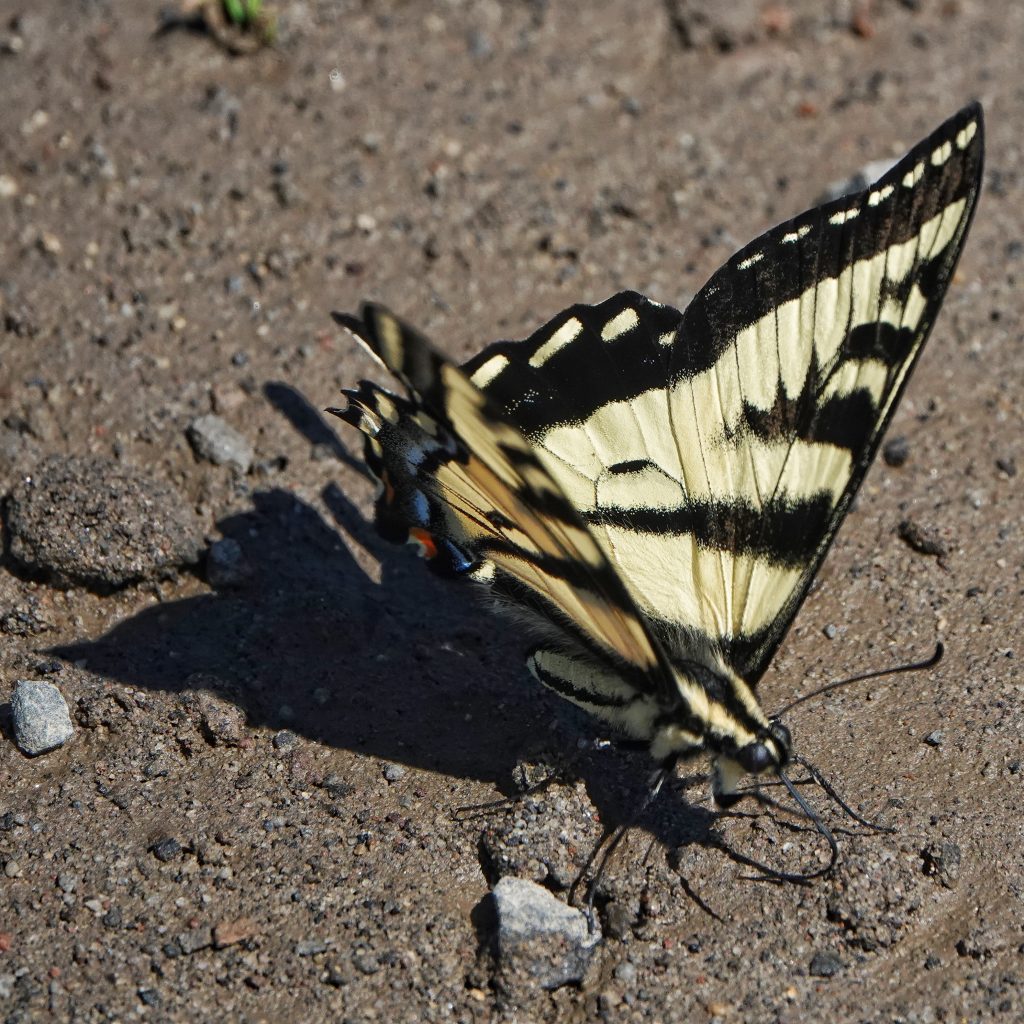
The majority of the butterflies in this post were seen on the summer solstice, near the Columbia River, outside Kalama, Washington. They weren’t the first Western Tiger Swallowtails I saw this year, but they were the first congregation of them, and the first group I found puddling. What I said (in the previous profile) about Pale Tiger Swallowtails always being in motion is just as true for Western Tigers. When I first started trying to photograph butterflies I would chase Papilio spp. all over the place, but seldom did I get lucky and have one land. Then I learned about their proclivity for puddling, and started keeping an eye out for likely locations, and just admiring the rest of the swallowtails as they fluttered on their merry way.
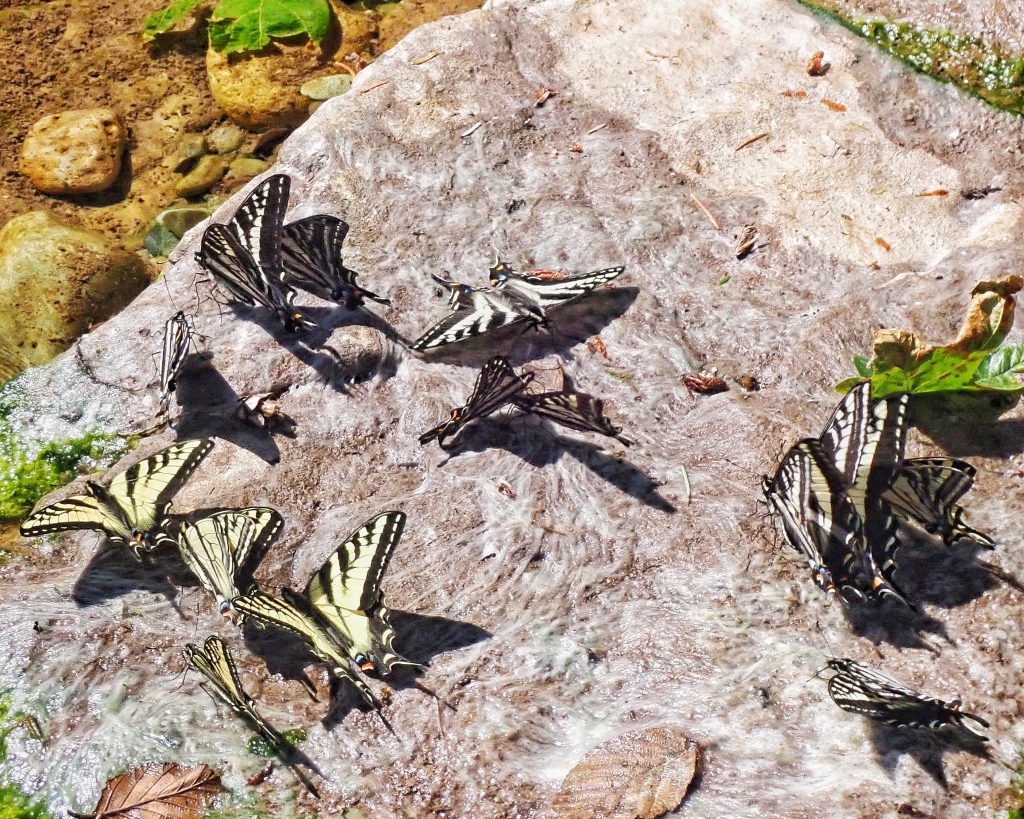
I don’t know if it was the bright sun washing out the color, or something in their diet or their genes, but these were particularly pale swallowtails, and until I found the puddle party and got a good look at them I wondered if they might be Pale Tiger Swallowtails. But as soon as I zoomed one in the viewfinder of the camera, and saw how narrow their black stripes and borders were, I knew for sure they were Western Tigers. And then, a week later, I got lucky and found another puddle party that also included Pale Tigers, and was able to get side by side comparison photos of the two species. And then, after I’d already written and scheduled this profile, and as if to prove me wrong about my notion that they seldom settle, I saw several nectaring on clover up on the Little White Salmon River, although most of my other photos didnt turn out well.
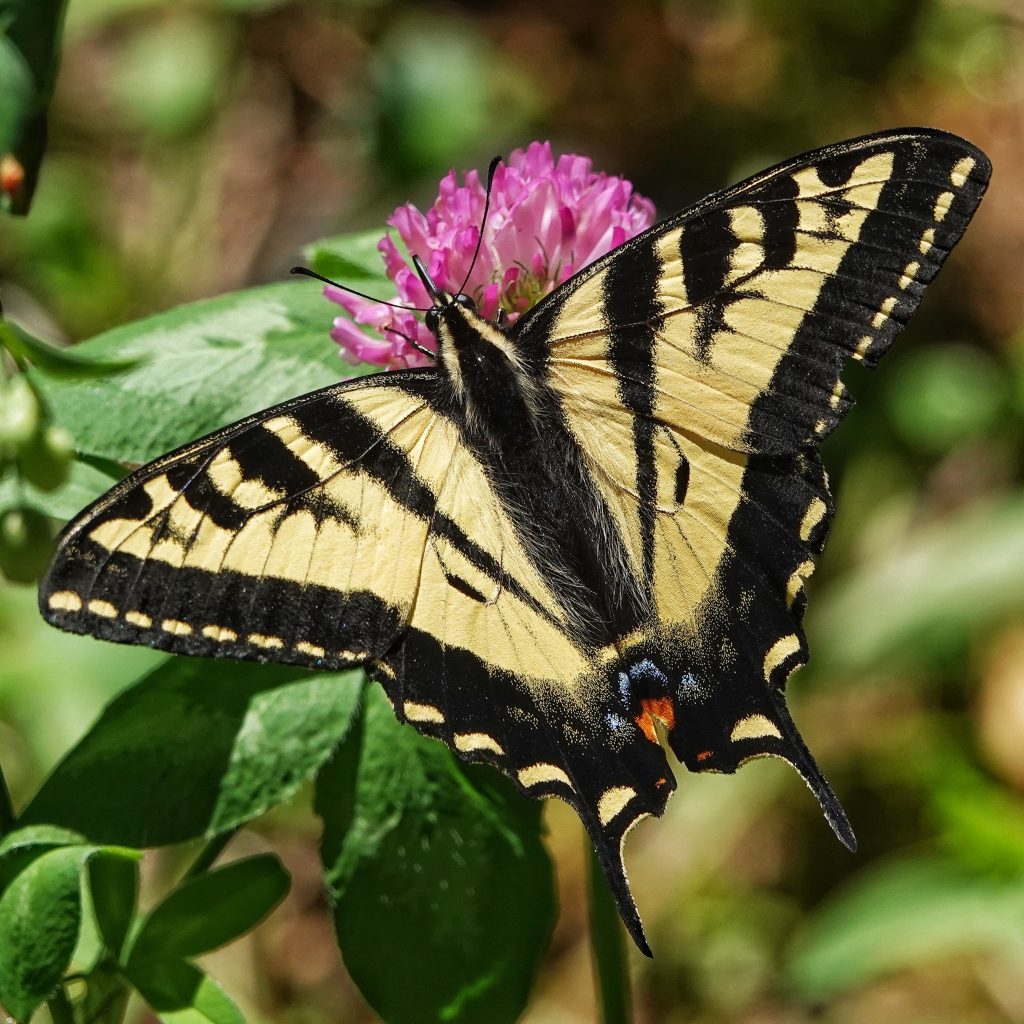
Due to the wide range of host plants they can utilize, and the amount of territory they can cover, there is nowhere in our region that you are not likely to see Papilio rutulus in July. They are probably the second most common butterfly in urban Vancouver, Washington (Cabbage Whites being the most common), and it’s always a delight when I see one of these big beautiful butterflies out our windows, dancing through the air in the space between our apartment buildings.
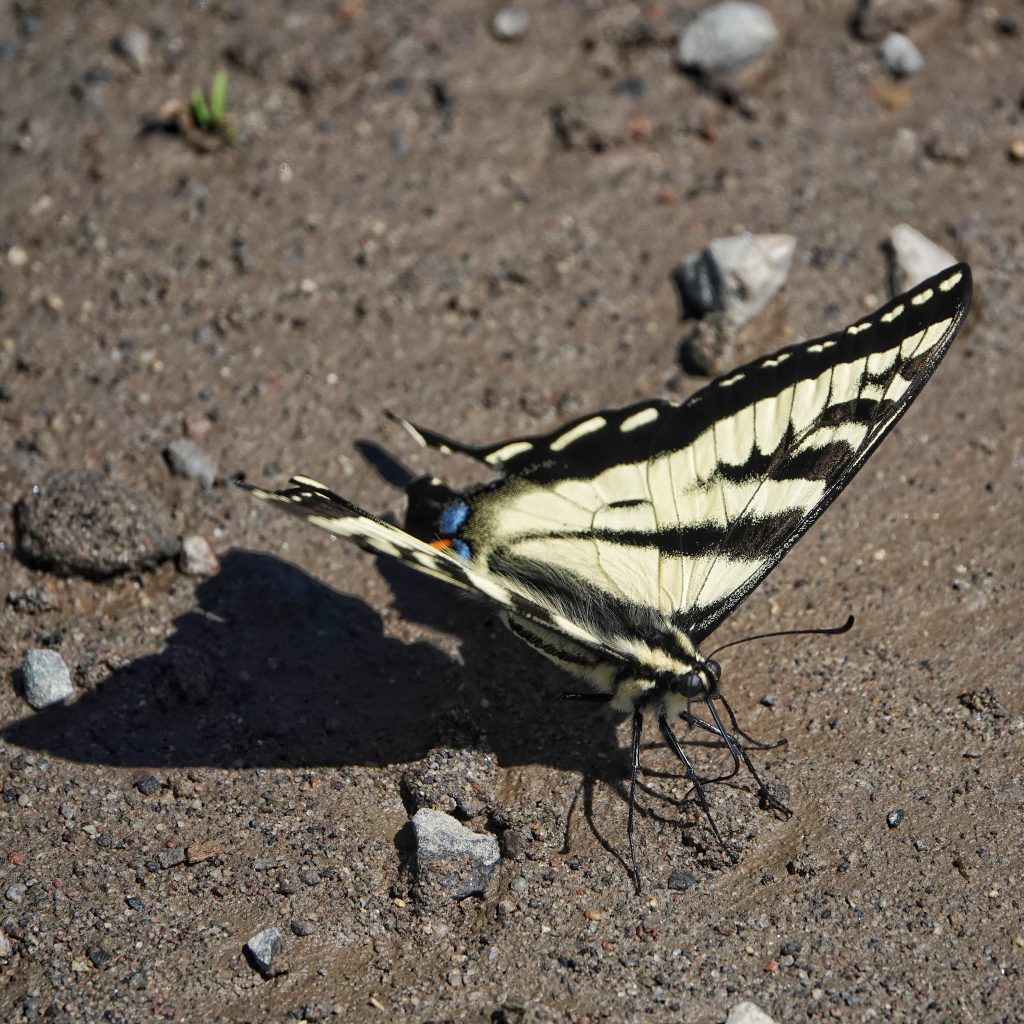
Description-Large (up to 3.5” wingspan) black and yellow swallowtail with narrow black stripes and border; base of ‘tail has a yellow crescent, and all marginal crescents on both the dorsal and ventral hindwing are yellow; has a single tail and blue submarginal marks on hindwing.
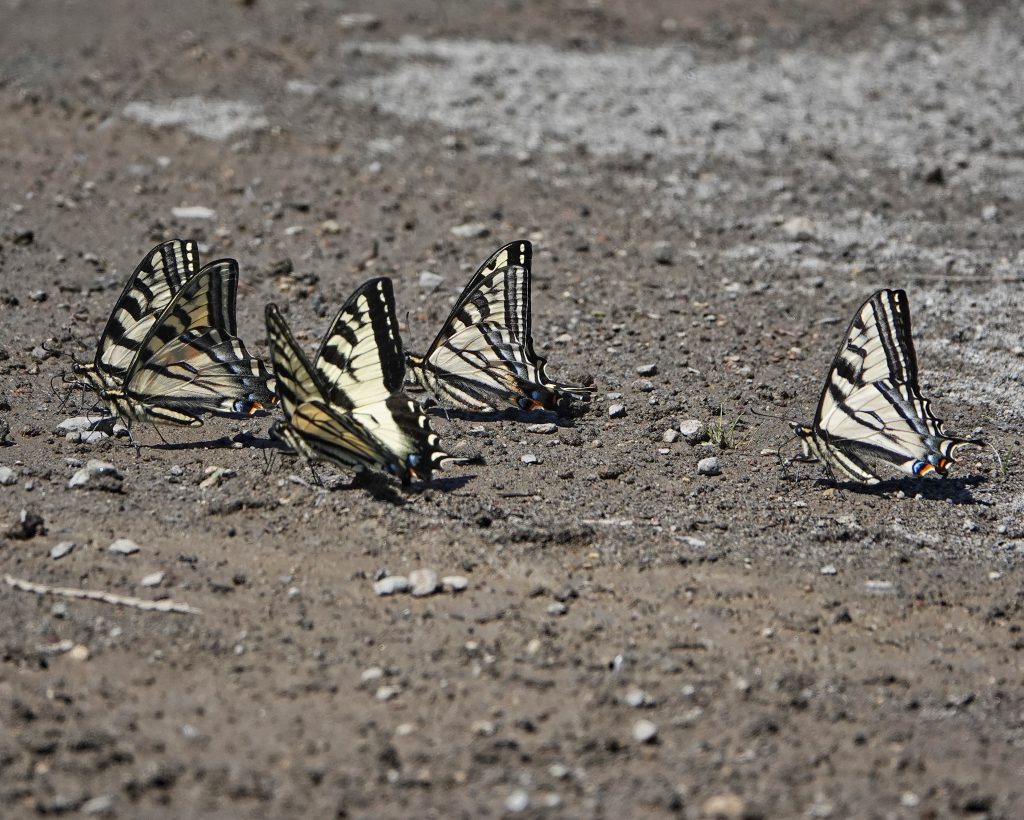
Similar species–Papilio eurymedon is black and white, has broader stripes and borders, and has a bright orange crescent at the base of the ‘tail’; P. canadensis has upper marginal crescent orange on dorsal hindwing, all ventral hindwing marginal crescents are orange, and is only found in our region in extreme nw Washington and e BC.; P. multicaudata has even narrower stripes, is much larger (up to 5” wingspan), and has two tails; other swallowtails are not ‘tiger striped’, and have extensive black on the front of the forewing.
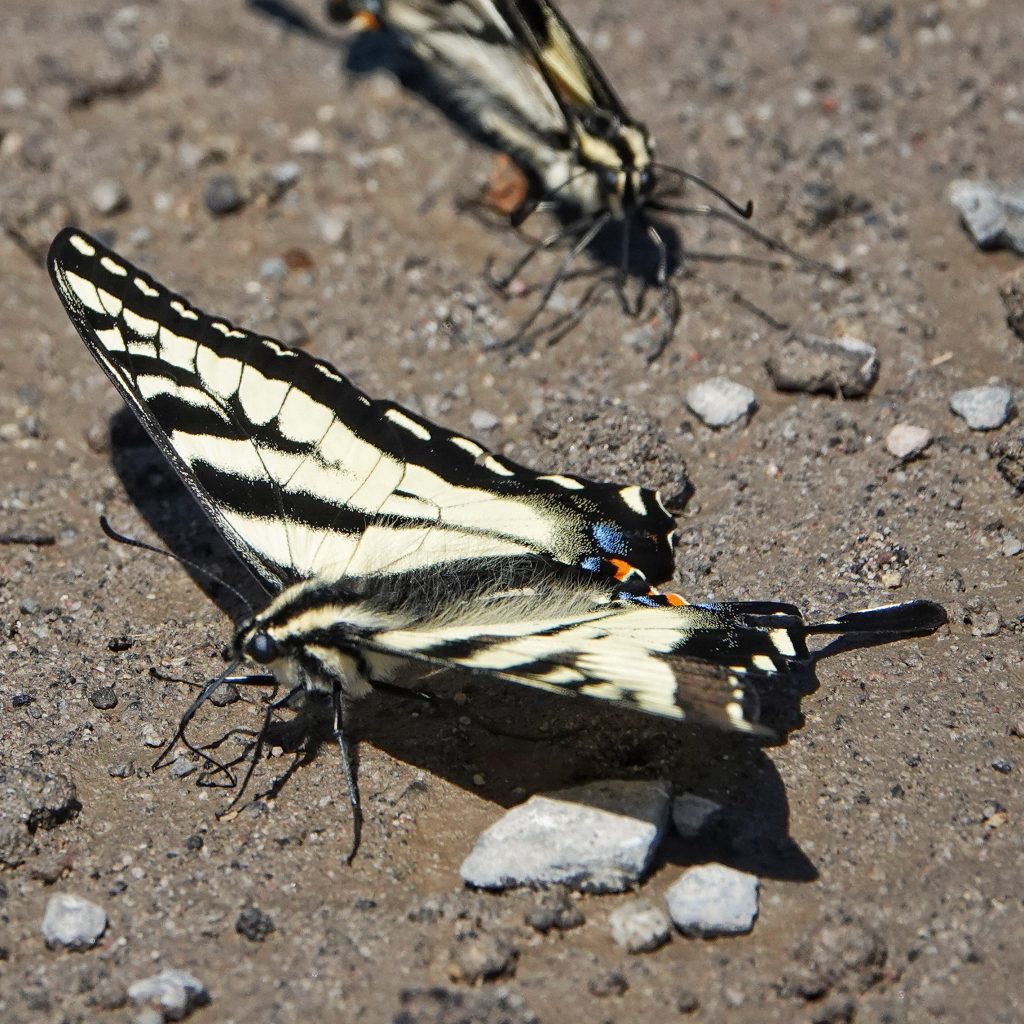
Habitat-Almost anywhere they can find one of their many larval hosts.
Range-Western North America; region wide in appropriate habitats.
Eats-Larval hosts include maples, ash, alder, aspen, willows, cottonwoods, and bitter cherry, among many others; adults nectar at a variety of flowers, including blackberries, thistles, oxeye daisies, Columbine, teasel, yarrow, phlox, and rhododendron; males are avid puddlers.
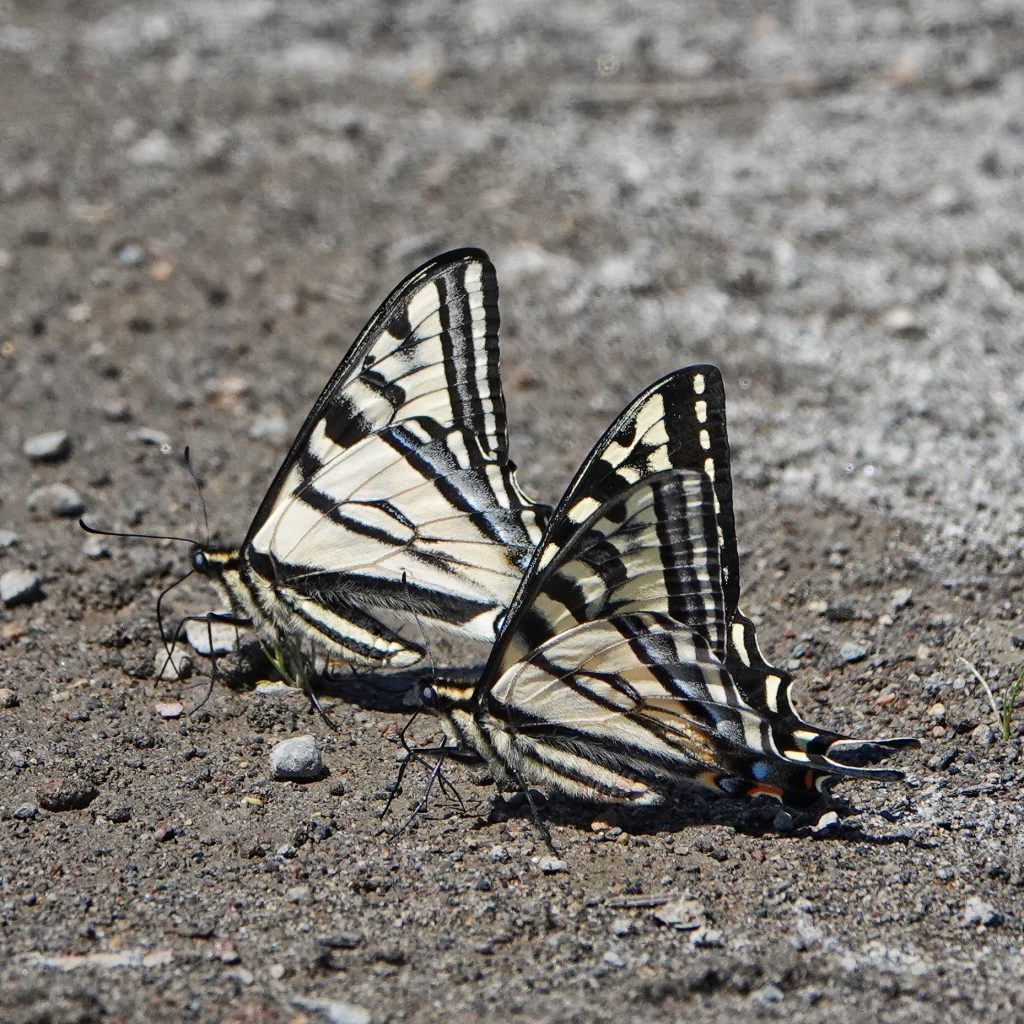
Eaten by– Probably any insectivores that can catch and subdue them; caterpillars are parasitized by Ichneumonid wasps, especially those in the genus Trogus, and by the Chalcedon wasp Trichogramma alpha, as well as by Tachinid and other parasitic flies.
Adults active-May through September, depending on weather and elevation.
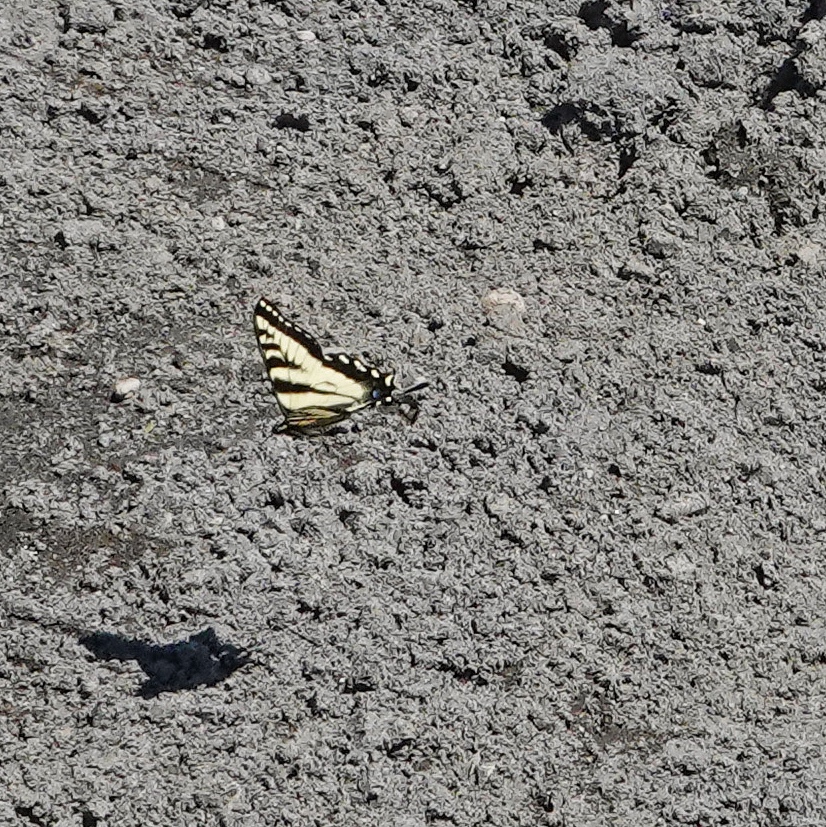
Life cycle-Single eggs are laid on the upper surface of leaves of the host plant, and only a few eggs are deposited per plant; larvae hatch in 7-10 days, and after 5 instars mature in 6-8 weeks; usually travel for a day or two just before pupation; overwinter as pupa; primarily univoltine in our region, but may be bivoltine in the southern parts of the PNW, and in optimal conditions.
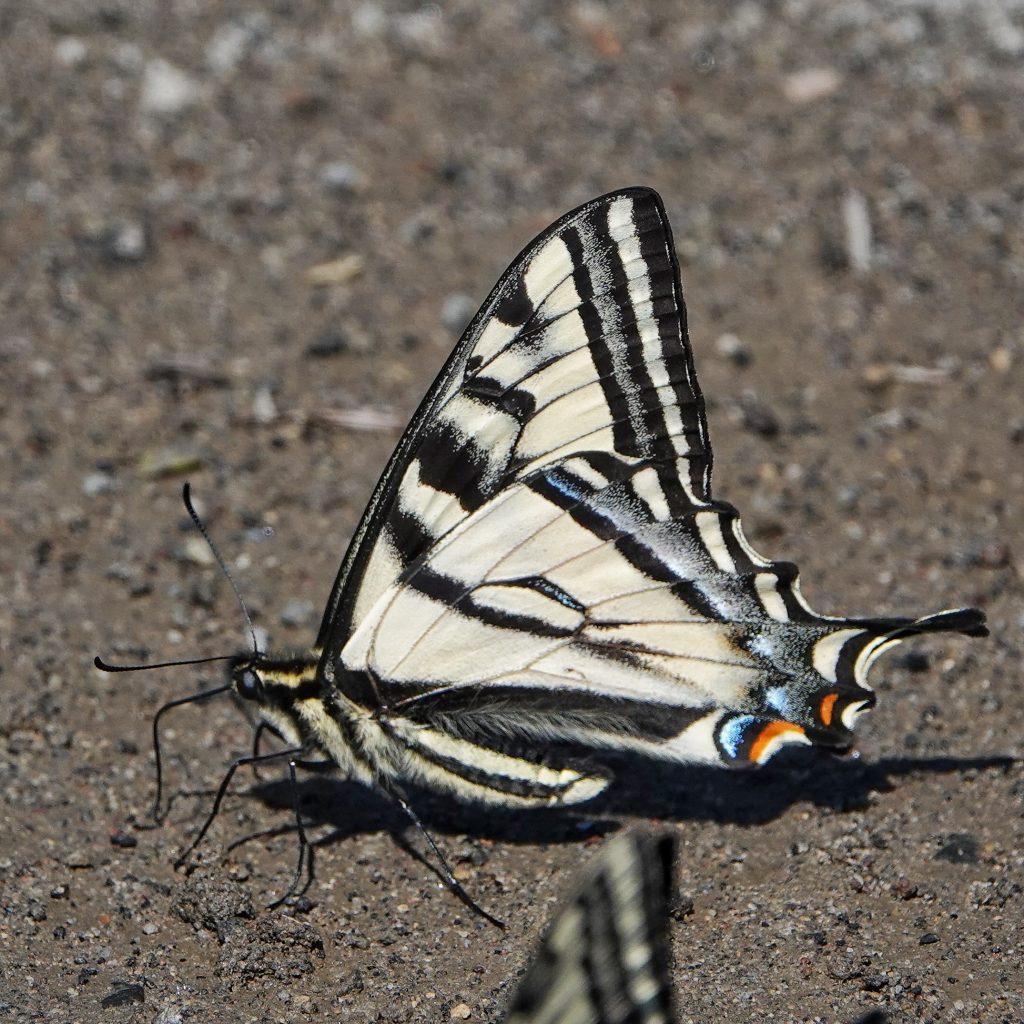
Etymology of names–Papilio is from the Latin word for butterfly. The specific epithet rutulus is from the Roman people called Rutuli, whose king was Turnus, which was a former specific epithet for the Eastern Tiger Swallowtail.
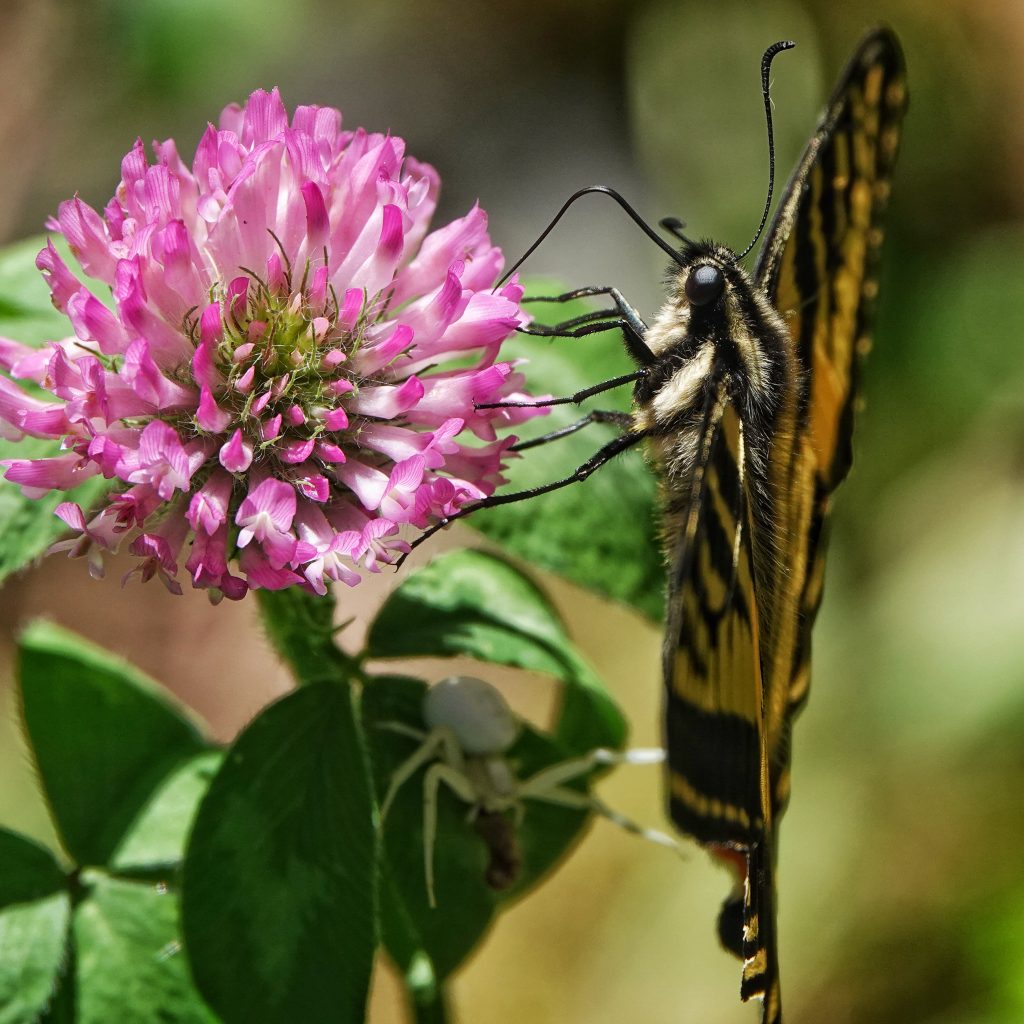
http://northwestbutterflies.blogspot.com/2015/05/species-profile-swallowtails.html
https://www.butterfliesandmoths.org/species/Papilio-rutulus
https://bugguide.net/node/view/24573
https://butterfly.ucdavis.edu/butterfly/papilio/rutulus
https://nathistoc.bio.uci.edu/lepidopt/papilio/tiger.htm
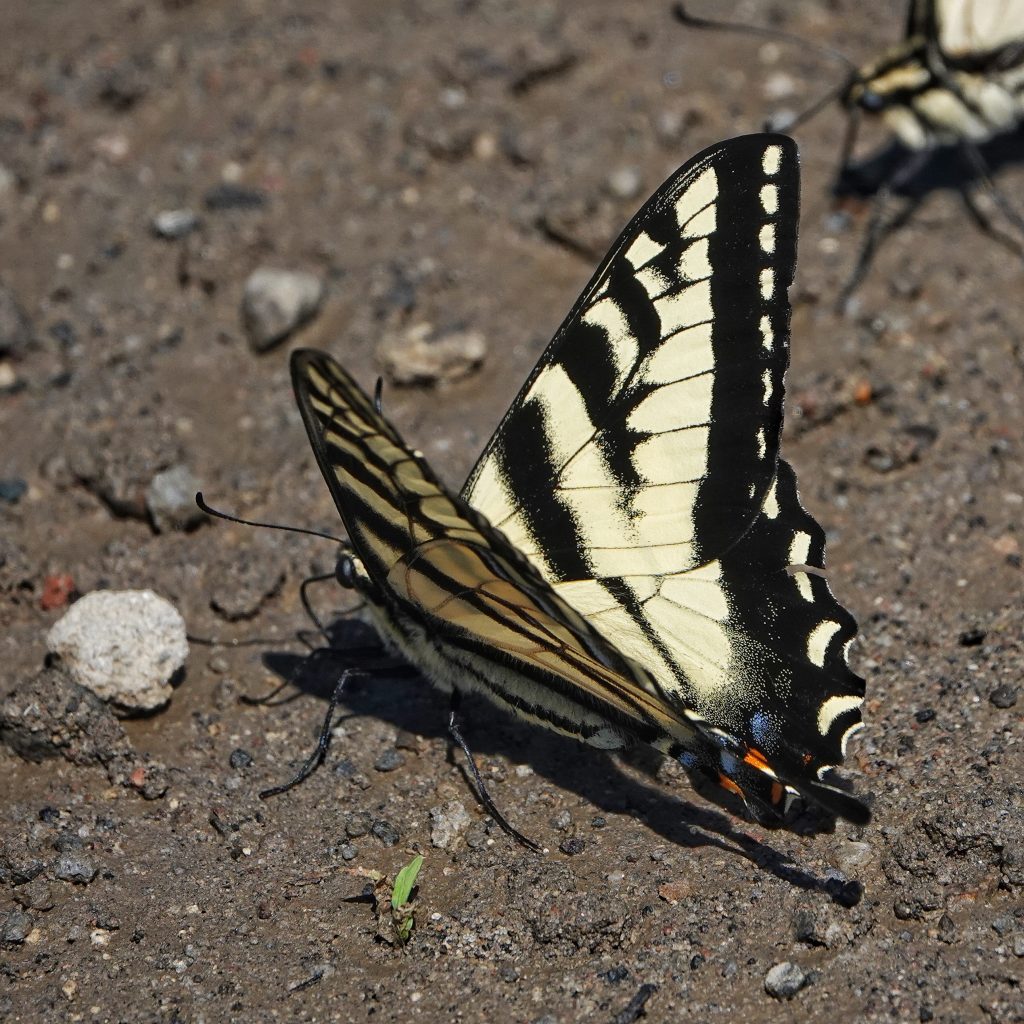
2 thoughts on “Papilio rutulus (Western Tiger Swallowtails)”